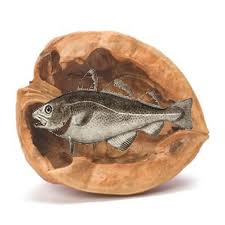Fact About Fracking and Water in Texas
Hydraulic fracturing, or fracking , is a drilling process that requires massive amounts of water.
Some south Texas ranches report that their wells are drying up, and a study commissioned by one groundwater district found that in one five-county area, fracking reduces the amount of water in the Carrizo-Wilcox Aquifer by the equivalent of one-third of the aquifer’s recharge. Recharge means the average amount of water an aquifer regains each year from precipitation and other factors.
Fracking uses roughly 4 to 6 million gallons of water per oil or gas well.
Studies say that fracking consumes less than 1 percent of the total water used statewide, far less than agriculture or watering lawns. But in some drilling hotbeds like Dimmit County, the proportion of water used for fracking has reached the double digits and is growing along with the oil boom. Companies are springing up to offer recycling, and some drillers are able to use brackish water, but those technologies are often not cost-effective.
At two state legislative committee sessions studying fracking and water use, industry representatives testified about emerging water-saving technologies like recycling. But in 2011, only about one-fifth of the water used in fracking came from recycled or brackish water. The consensus is that the industry is not doing enough to restrict water use.In a typical fracking job, water blended with smaller amounts of sand and numerous chemicals is pumped down a well to release oil or gas trapped in the pores of hard rock. The use of chemicals has stirred fears of spills and contamination, especially because companies keep some of the chemicals secret.In 2011, Texas used a greater number of barrels of water for oil and natural gas fracking (about 632 million) than the number of barrels of oil it produced (about 441 million), according to figures from the Texas Water Development Board and the Railroad Commission of Texas, the state’s oil and gas regulator.
Another study found that the amount of water used statewide for fracking more than doubled between 2008 and 2011. The amount is expected to increase before leveling off in the 2020s.
Often. landowners sell groundwater to frackers. Water for fracking may sell for 35 to 50 cents a barrel, according to the Texas Water Recycling Association, a new nonprofit advocating for the water recycling industry.
Much water used in fracking comes from wells that are drilled specifically for the purpose. State law is ambiguous on the legality.
There is also the issue of heavy use of trucks to haul away “produced” water, which is the name given to the frack water that comes back to the surface along with the oil and gas–water which must be subsequently hauled away.
Another controversial practice is disposing of chemical-laced water left over after fracking that is injected into injection wells. The safety of the practice is debated and is likely due for more regulation.
More companies are experimenting with the use of brackish water, an abundant underground resource in Texas. The water contains more salts than freshwater does. It may also contain other elements like boron, which can harm the drilling process, and the reservoirs may be deeper and more expensive to tap.
A few companies have branched into water-free fracking. Gasfrac, a Canadian company uses propane rather than water in fracking.
In another alternative, city sewage has been recycled for use in fracking. But for right now, fracking is a major consumer of fresh water.
Source Reference: StateImpact, Texas Tribune.





![fracking[1]](http://purewatergazette.net/blog/wp-content/uploads/2012/07/fracking1.jpg)
![image[1]](http://purewatergazette.net/blog/wp-content/uploads/2013/03/image1.jpg)
![treatedwater-web[1]](http://purewatergazette.net/blog/wp-content/uploads/2013/03/treatedwater-web1.jpg)
![130226120551-large[1]](http://purewatergazette.net/blog/wp-content/uploads/2013/02/130226120551-large1-300x200.jpg)
![hw77ionizer[1]](http://purewatergazette.net/blog/wp-content/uploads/2013/02/hw77ionizer1.gif)
